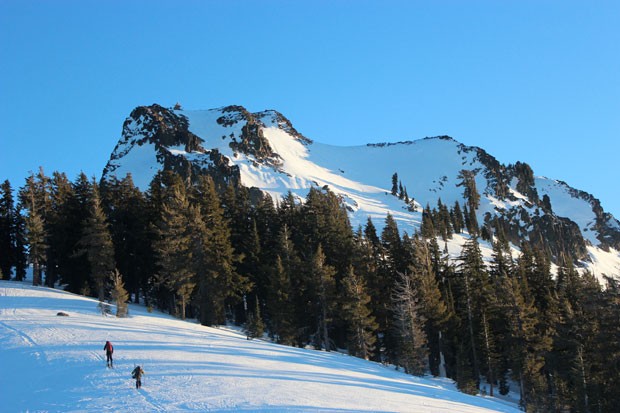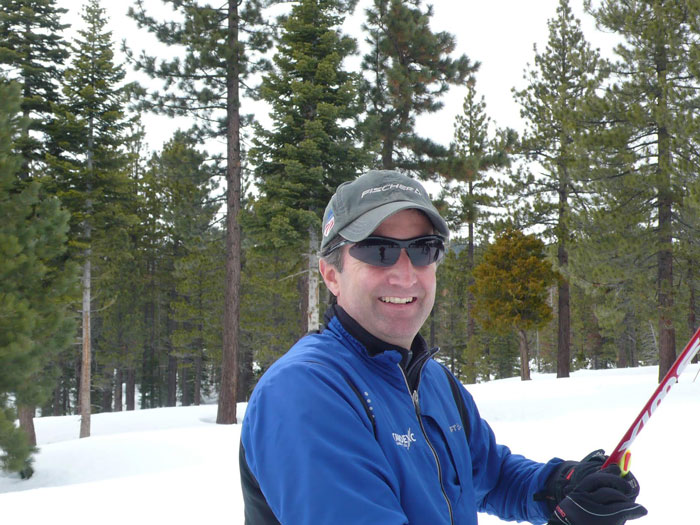- California Enduro Series Announces 2024 Schedule - 11/19/2023
- ASHLAND MOUNTAIN CHALLENGE 2023 – CES RACE REPORT - 10/04/2023
- China Peak Enduro 2023 – CES Race Report - 09/04/2023
Training for a lifetime of cross country skiing
By Tim Hauserman
There are just a few sports that one can happily participate in from the age of four to 84. One is cross country (aka Nordic) skiing. While it might not have the Red Bull dopamine star power of downhill skiing or snowboarding, cross country skiing develops strength, flexibility and aerobic capacity. And while almost anyone can enjoy sliding on snow, the upper echelon of cross country skiing produces the world’s greatest aerobic powerhouses. Outside recently ranked cross country skiing as the world’s toughest outdoor sport.
The Lake Tahoe region has produced a vast number of Olympic medalists in skiing and snowboarding, but even though it has the largest concentration of Nordic trails in the United States, it has not yet produced an Olympic cross country ski athlete. There are, however, a variety of programs in the Tahoe region which are designed to create a life long interest in cross country skiing, as well as perhaps training a future Olympian.
Whether it is Auburn Ski Club’s Super Slider and Super Sonic programs, Tahoe Donner Cross Country’s Nordic Kids, or Tahoe Cross Country’s Strider Gliders, the goal of programs geared towards the youngest skiers is simple: introduce kids to cross country skiing. Strider Gliders starts at four years of age, while the other programs begin at five and they continue through fifth grade. In general, these programs focus less on technique, and more on giving kids the opportunity to have fun on snow. The reasoning is simple: if kids are not having fun, they will find something else they would rather do. The good news, says Valli Murnane, Director of the Tahoe Cross Country Ski Education Association, is that even if they stop cross country skiing and take up other sports in middle school or high school, the seed has been planted, and later in life the Strider Glider experience might bring them back to cross country skiing.
Once they reach fifth grade, kids in North Tahoe and Truckee can join the Middle School Nordic Teams. While these teams are large and active, it is at the middle school level when students begin the process of narrowing down what sports they will choose to focus on. By high school, competition for kids’ time gets even more fierce, and more activities are chopped from the schedule. Dancers start dancing a few more days a week, soccer becomes a year-round sport, and those who are competing in both downhill and cross country skiing have to choose which one they prefer.
To get a leg up on the competition and keep Nordic kids skiing, ski clubs developed to provide additional focused training for those who chose Nordic skiing as their primary sport. One of the longest running development programs is at Auburn Ski Club (ASC). ASC Coach Gus Johnson has a Development Team (Devo) for 11-15 year olds, and a Competition Team (Comp) Team for mostly 14-19 year olds, but it is more about ability than age.
“At the Devo level we keep it light and fun. Some train year-round, and some just on weekends. We are flexible to other programs,” said Johnson. But when the athletes advance to the Comp level, usually in high school, they have made the decision to focus on cross country skiing and will train four or more days per week.
The Tahoe Cross Country’s Devo program has a new coach, Eliska Albrigtsen. Originally from the Czech Republic, she has been a ski racer for over 20 years, and found great success racing in college for the powerhouse University of Colorado in Boulder. Albrigtsen says, her focus with the kids is on “setting progress goals more than outcome goals. We don’t think about the results, but focus more on whether you did V2 on the easier uphills, did you not snowplow on the downhills, and were you tight on your tuck?”
Johnson says that the kids “really have to have the mindset that this is tough and I can do it. Cross country ski racing is really a hard sport. But how much fun we have and how tough it is, is the draw.”
While it is a challenge being a Nordic racer, Johnson feels that kids get a great return for their investment. “We’re teaching kids the value of hard work and time management. They come out with a set of skills that will set them up for future success, no matter what they are doing,” said Johnson.
Albrigtsen agrees, saying that her charges already talk about skiing with their own kids some day. She says they are even learning an important money management lesson: how to save enough money to get better skis and roller skis.
Once students from the Sierra region graduate high school, the closest college cross country ski programs are in Montana, Utah and Colorado, but the biggest concentration of racing schools is in New England. Thus kids who want to race, and go to college, have to leave the area.
After college, folks who return to Tahoe can find plenty of opportunities to race, but the training opportunities are more limited. The Far West Nordic Ski Association schedule includes a community race almost every weekend between Mammoth and Tahoe. Albrigtsen teaches a masters program, and many of her students are parents of the younger racers she coaches.
The problem for cross country ski racing is that it takes a long time to build up the endurance and strength needed to compete at an international level. The best racers are in their 30s, having spent decades training. Except for the very few who have earned a spot on the US Ski Team, there is no real support network to enable skiers to keep training for the 5-10-15 years after college it might take them to build up the endurance to compete at the highest level. And since Nordic skiing doesn’t have the fame to attract the sponsors that savvy snowboarders and skiers can accrue via social media, a cross country skier usually needs to somehow fit in all that training while working full time doing something else to make ends meet.
While this reality is daunting and discouraging for those who seek to create an Olympic cross country skiing legacy, for the vast majority of skiers, becoming an Olympian is not the point. Training programs are designed partly to create successful cross country ski racers, but mostly to create successful people. The goal is to develop love for a sport which will keep you fit and strong for your entire life. It also helps kids become well-rounded and grounded adults that you would enjoy hanging out with. Although Albrigtsen says, for her, it is really all about the fact that “there is no sexier man than a man in tights.”

Nordic skiing requires year-round aerobic fitness (Auburn Ski Club).
***
Read other backpacking & hiking posts here.













